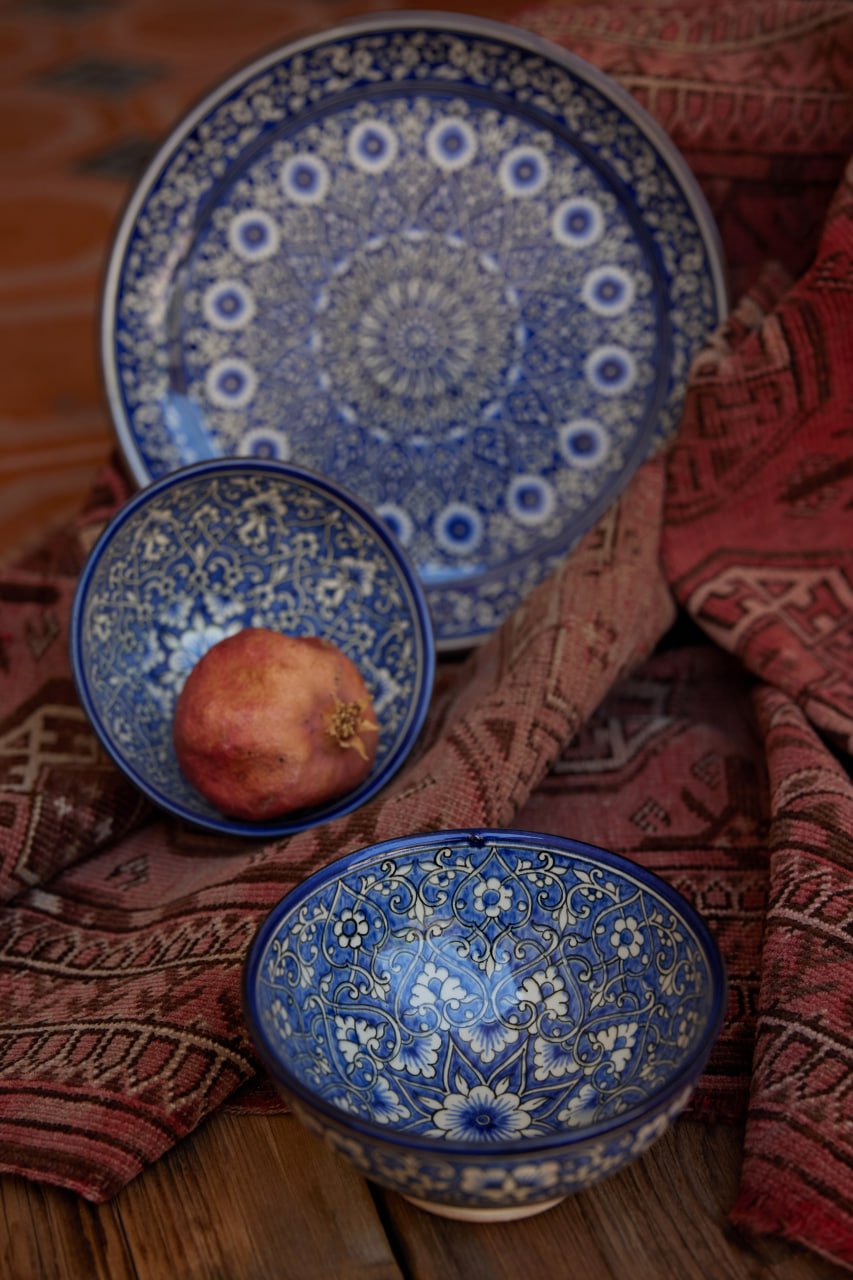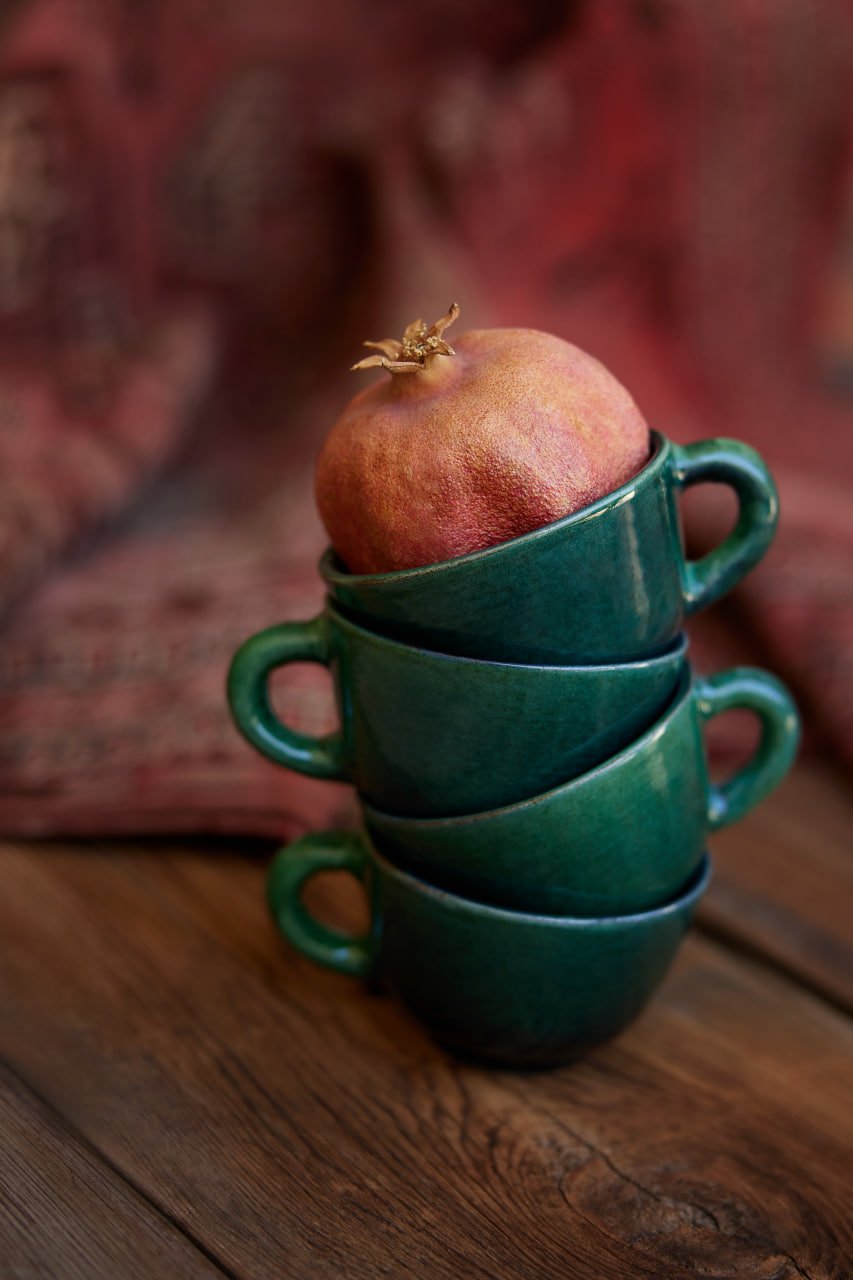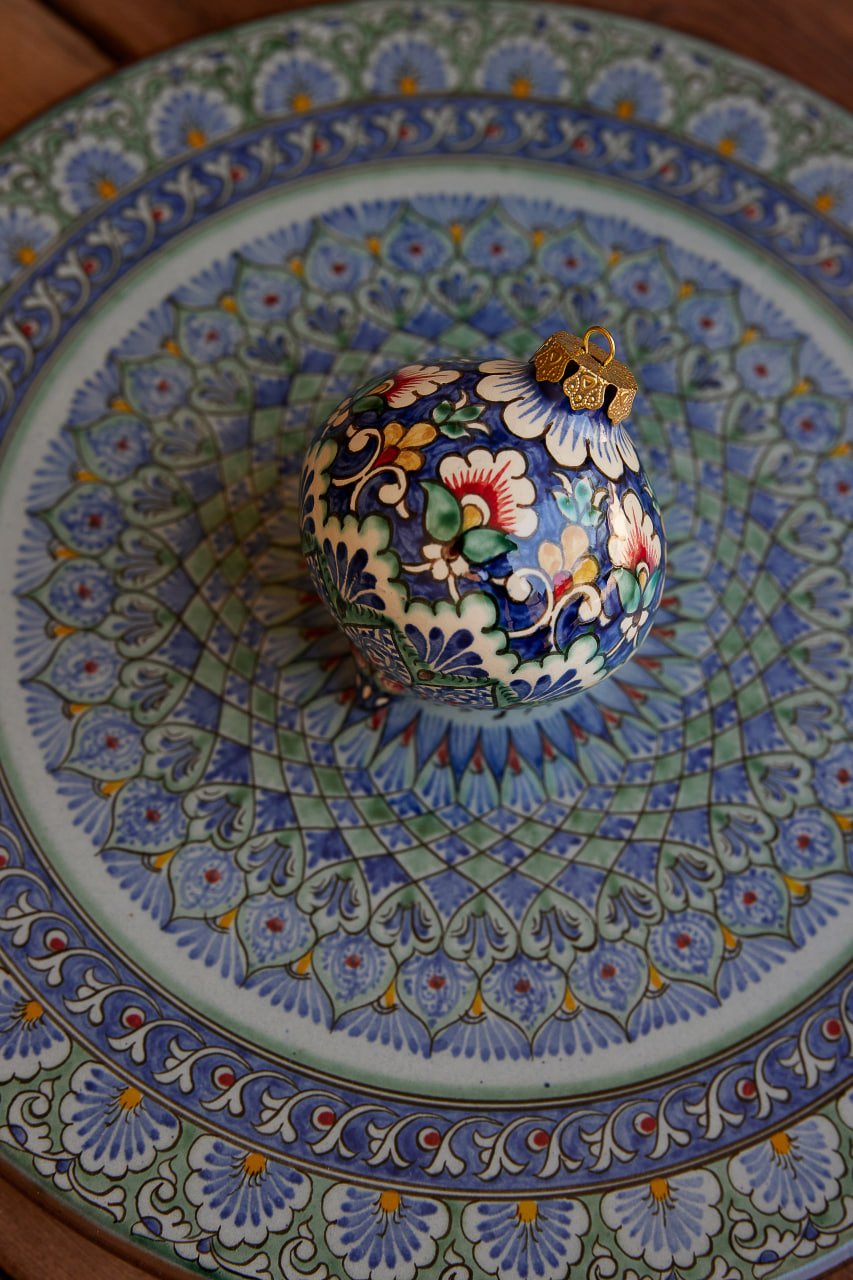The Art of Uzbek Pottery: Durdona Shavkatova on Islimiy Patterns
Pottery is both an ancient and a modern art form, creating incredible beauty from simple clay. The clay itself is a symbol of generosity, honesty and goodness. Every culture in the world has engaged in ceramics, each differing from the other in its own way. Here, Durdona Shavkatova takes a look at the most popular form of Uzbek ceramic art: plant-like patterns known as Islimiy.
Photos by Mukhiddin A Lee
Pottery can be found everywhere in Uzbekistan, but Rishton, Gijduvan, Shahrisabz, Khiva, Khanka, Samarkand and Tashkent have been famous since ancient times as the largest centres for ceramics.
The artistic style of Uzbek pottery has formed over a long period of time and several regional styles and patterns have been preserved through the centuries. The patterns on dishware were mainly pencil, drawing or engraving, and sometimes these were used together.
Styles of pottery differ from place to place, and master artisans use specific, often delicate patterns to decorate them. The common Uzbek decorative patterns are divided into four types: geometric (handasavi), plants (Islimiy), complex (gulli girih) and symbolic patterns.
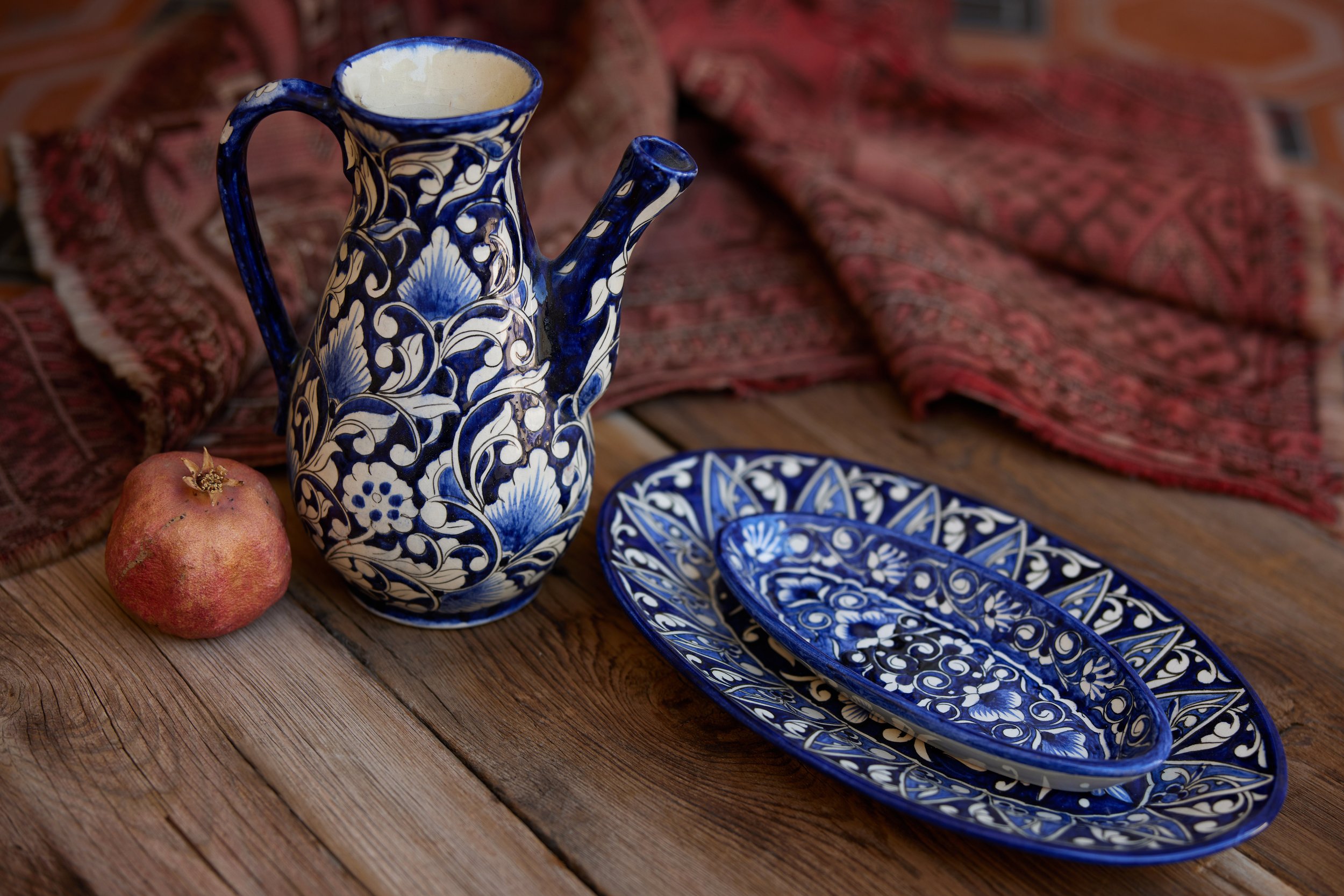
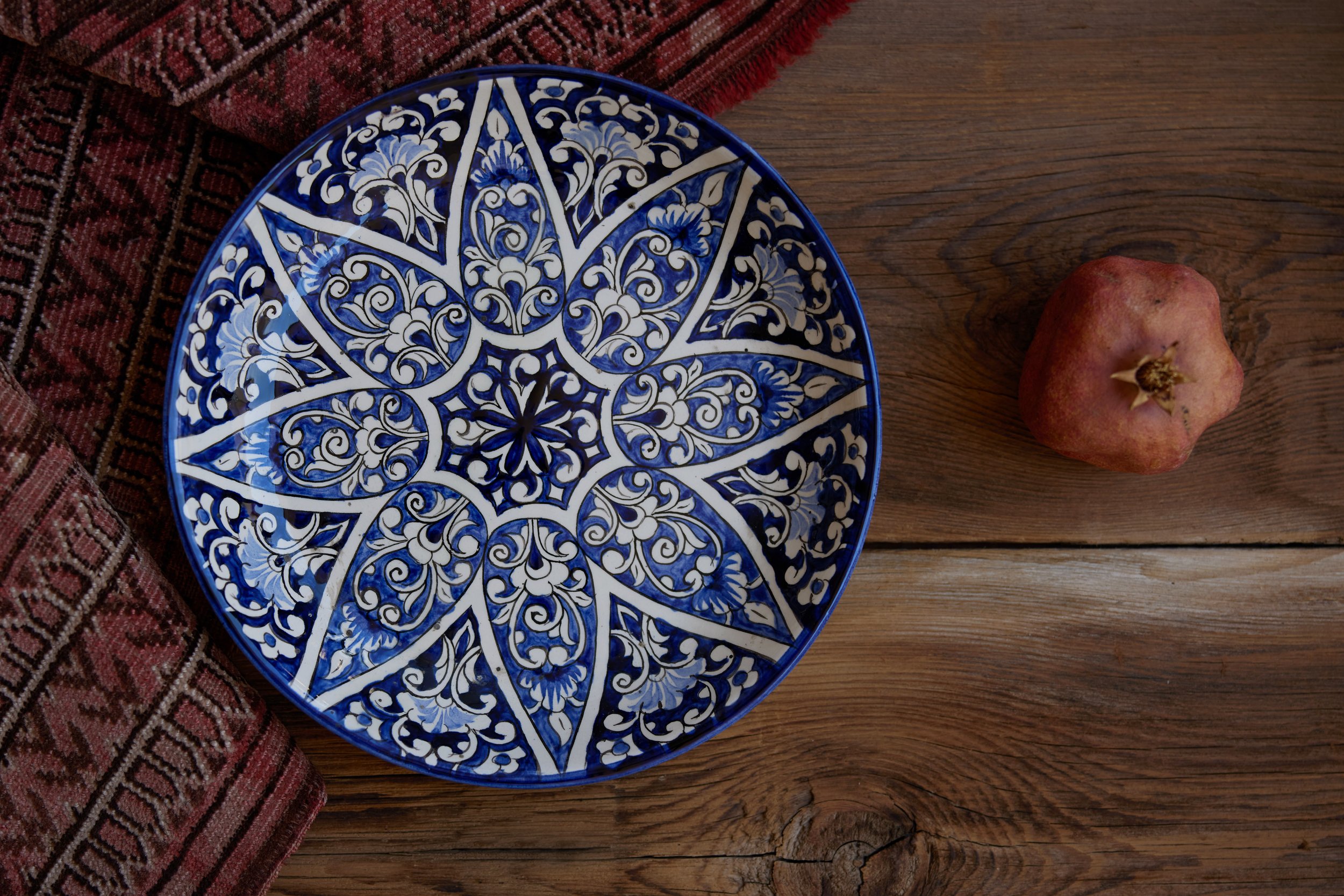
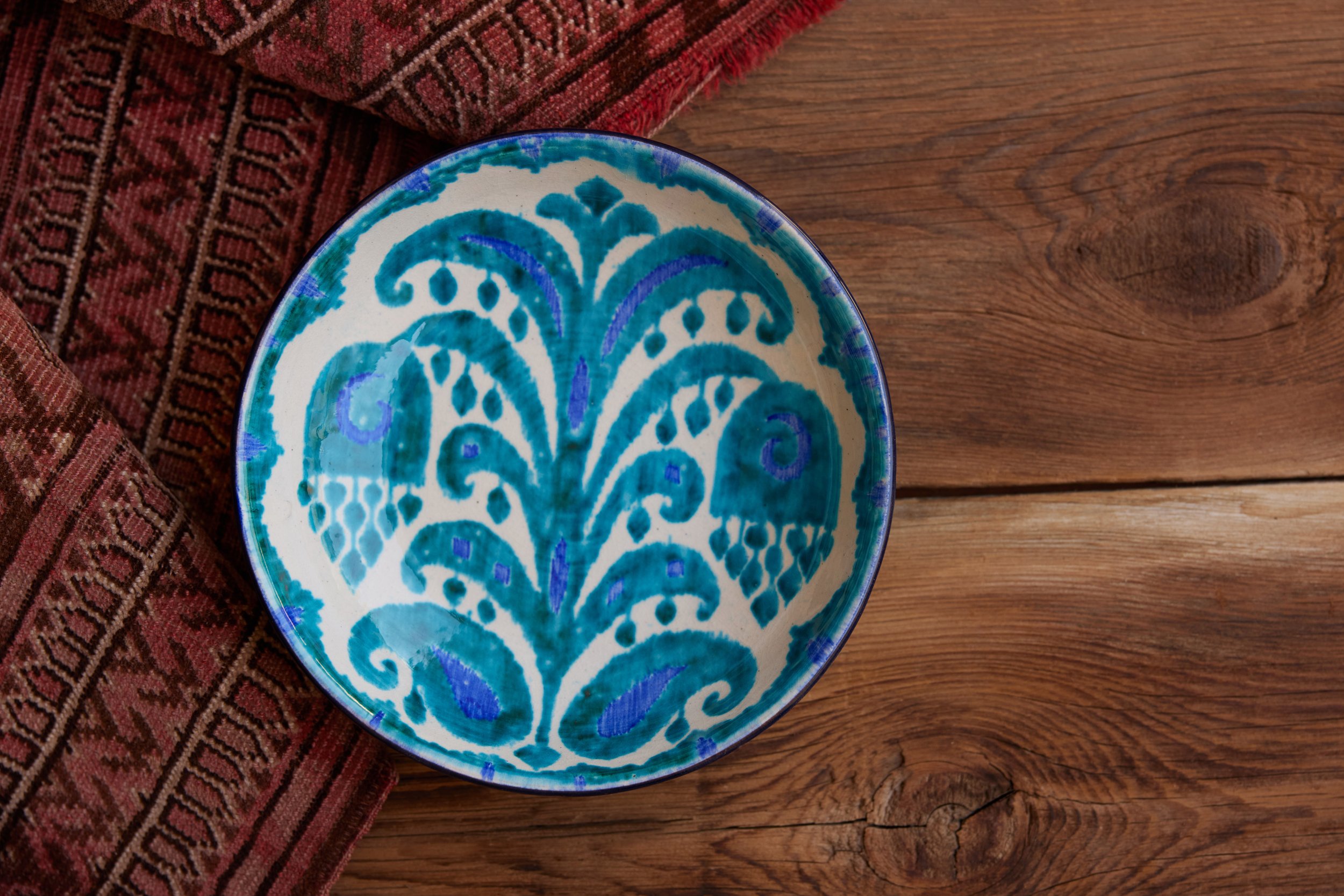
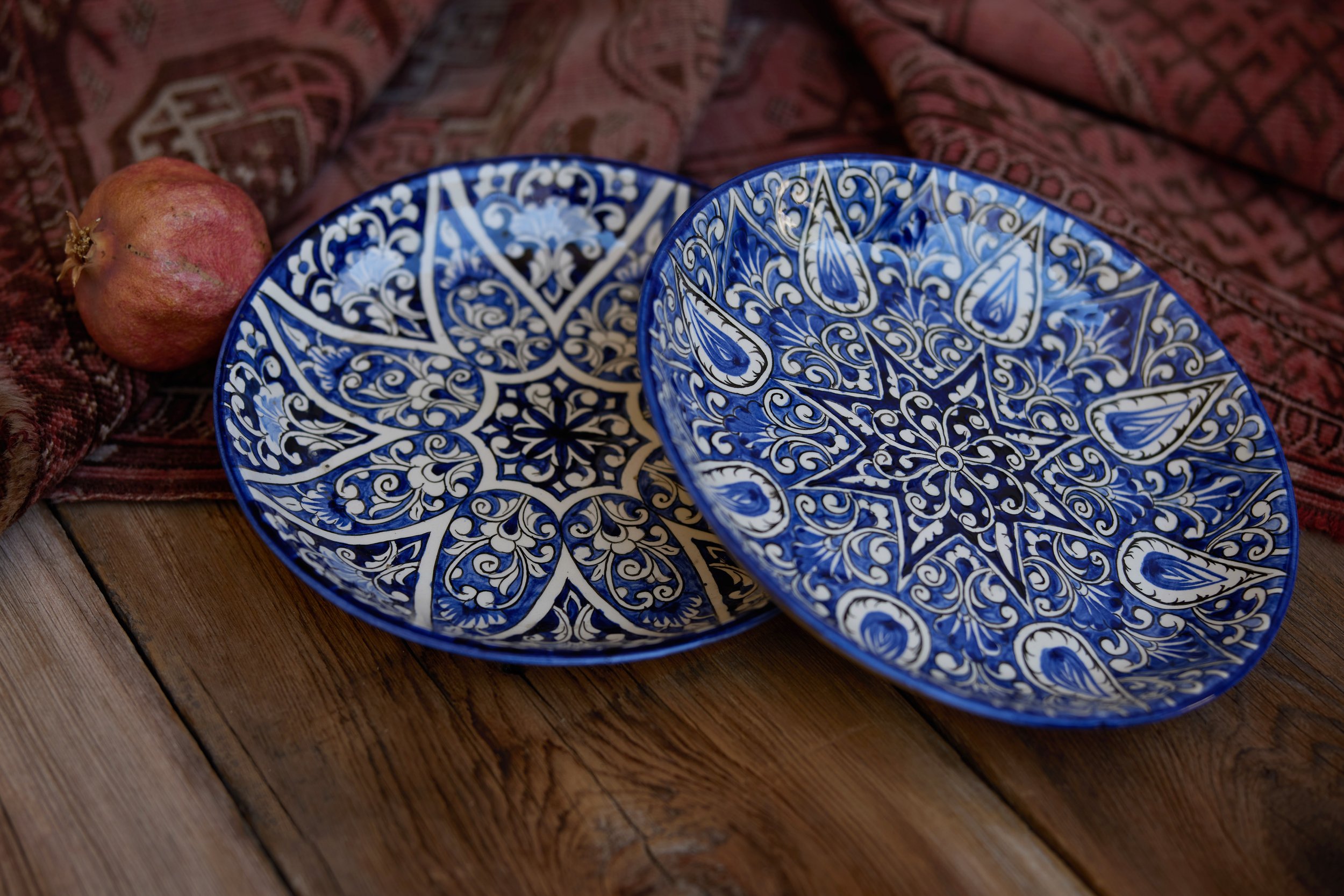
Of these, the Islimiy is the most widely used pattern, and itself has a number of sub-patterns created by repeating the shapes of leaves, branches, trees, bushes, buds, and other botanical motifs. Each motif carries its own symbolic meaning. Some of the most common motifs seen on Uzbek ceramics include:
Peppers
Chillis and peppers are plant-like design elements, which take various forms and are often depicted on ceramic vessels. They provide protection from all kinds of evil and evil eyes.
Pomegranate Flowers
The pomegranate and its flower, or anorgul, are common motifs across Islamic design and are widely used to decorate Uzbek ceramics. The image of a pomegranate or its flower on ceramic vessels symbolises goodness and generosity. In the Ferghana school, the anorgul is depicted either in a very natural way or as a stylised motif. Pomegranate patterns often show the inside of the pomegranate and its seeds. In addition to ceramics, the anorgul motif is widely used in Uzbek coppersmithing and embroidery.

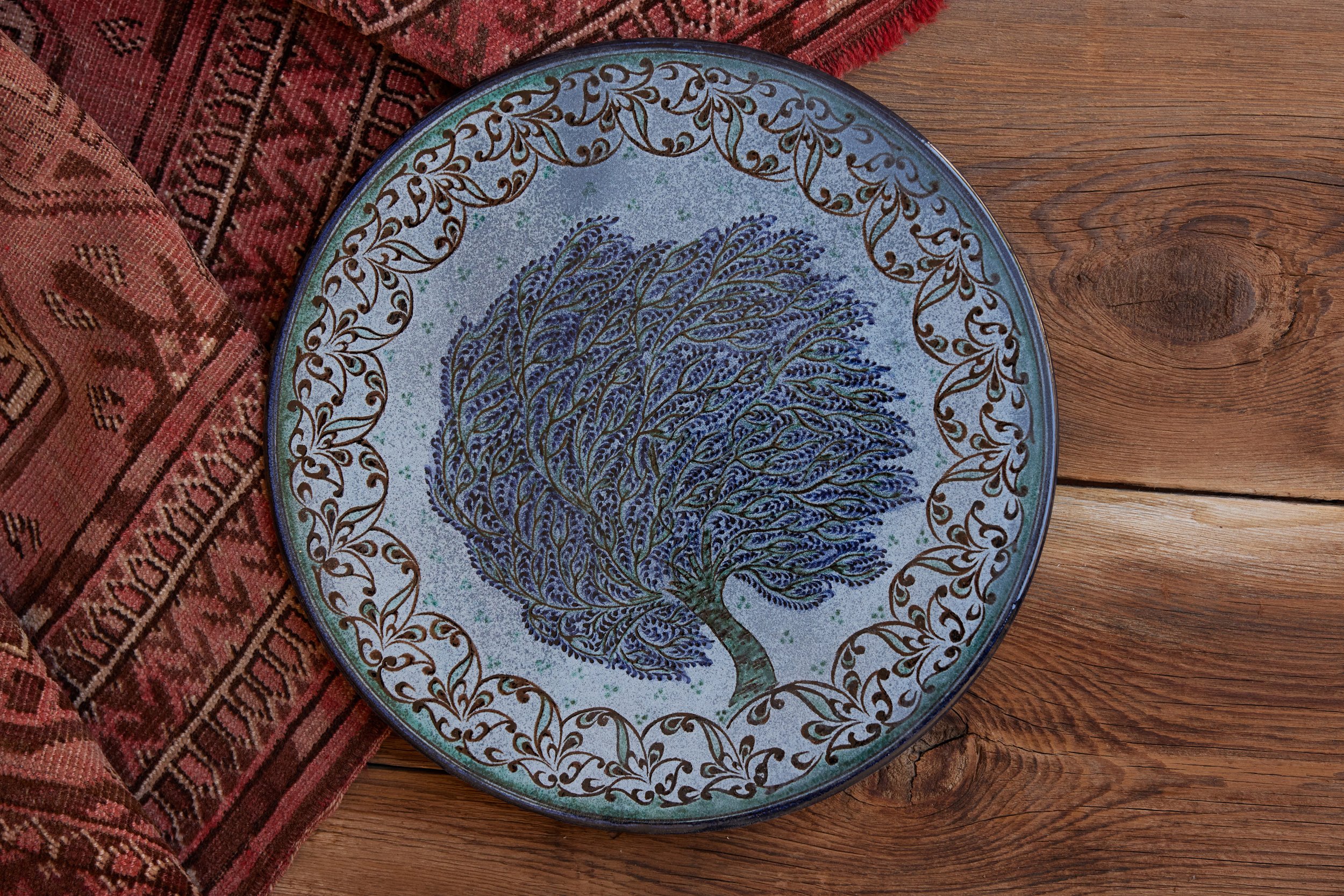

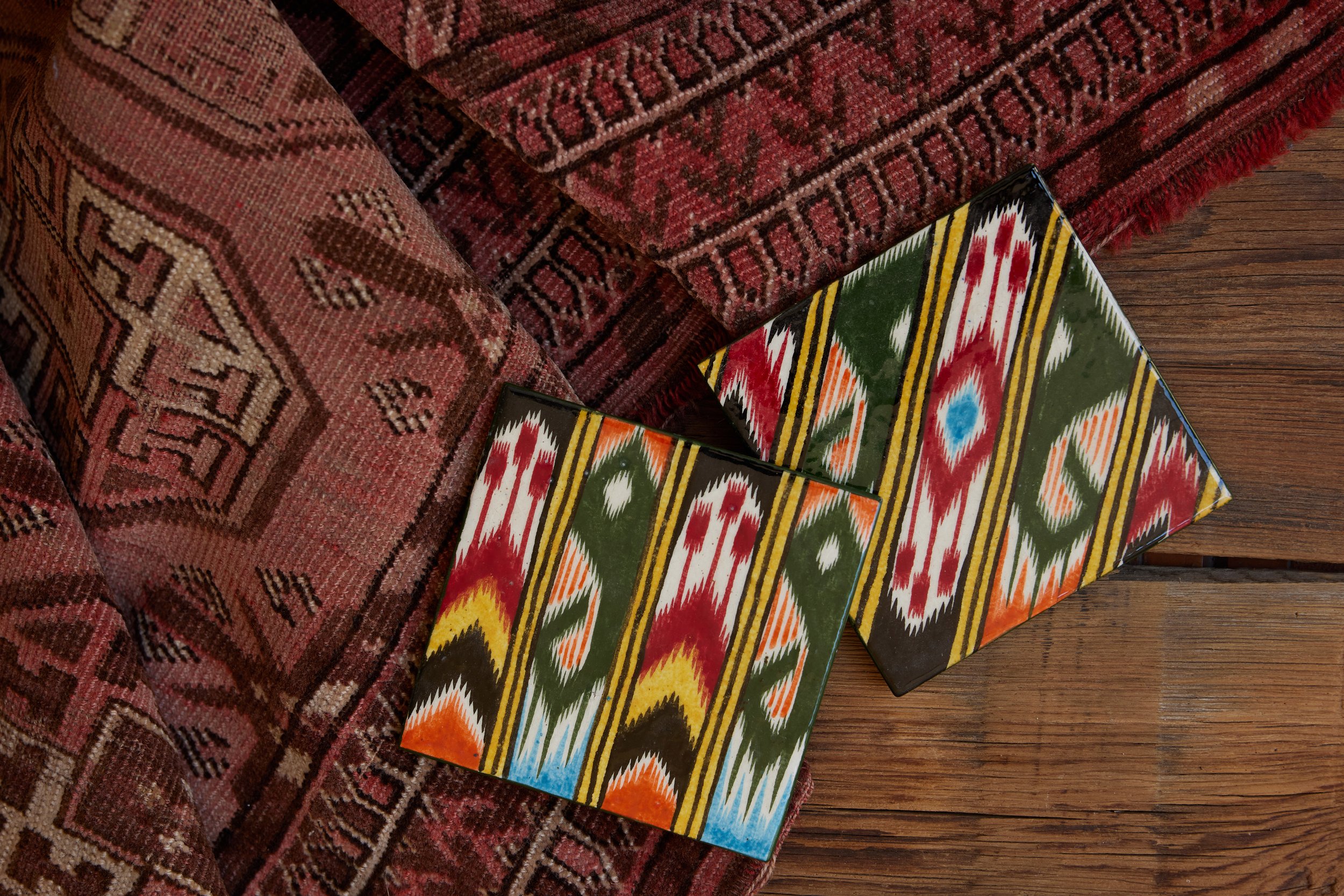
Leaves
Stylised or natural leaf patterns are common across Uzbek ceramic decorations. The image of a leaf on a ceramic vessel means awakening. A leaf is a complementary and decorative element in a pattern composition. According to its structure, it is divided into simple and complex types. Leaves most commonly depicted include the trifolium (clover), almond leaf and willow leaf. Compound images may include many bunches of leaves or grass-like sedges.
Flowers
Floral elements, particularly stylised flowers, are typically placed in the central parts of decorative patterns. Like leaves, flowers are also divided into simple and complex patterns according to their structure. Complex flowers include pistachios and multi-petalled flowers, while simple flowers include moonflowers, tulips and pea flowers. The symbolic meaning of each flower is different; for example, a rose means beauty, a tulip symbolises spring and a moonflower means happiness.
The photoset represents the selected artworks of Uzbek ceramists from Rishtan, a city in Fergana valley. Here are works of Rustam Usmanov, Saidjon Akhmedov, and other artists.


